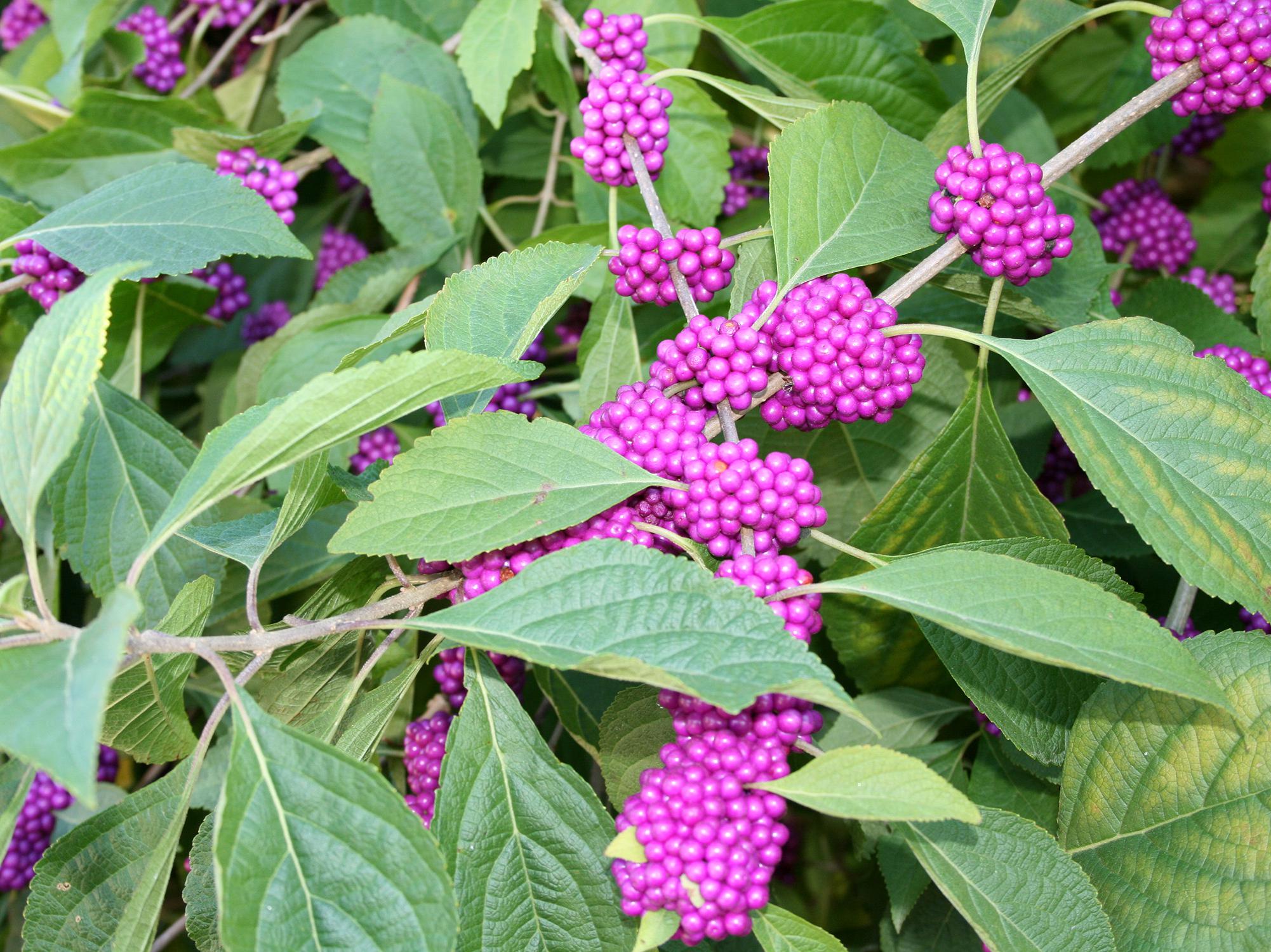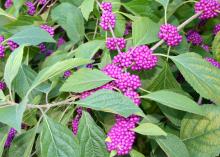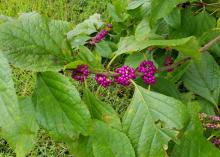Information Possibly Outdated
The information presented on this page was originally released on August 26, 2019. It may not be outdated, but please search our site for more current information. If you plan to quote or reference this information in a publication, please check with the Extension specialist or author before proceeding.
American beautyberry shines in late summer
One of my favorite Mississippi native plants is just starting to show its true landscape value. Of course, I’m referring to our native Callicarpa americana, known commonly and affectionately as the American beautyberry.
This plant is commonly found along the edges of woodlands and wild areas, and I think more gardeners need to grow it. Supporting this idea is the fact that American beautyberry has been named a Mississippi Medallion winner for 2020.
This deciduous shrub starts the year off as a leafless wallflower. New growth starts pushing out in midspring and joins the green background while gardeners are planting and enjoying all the colorful annuals.
Even when beautyberry flowers, it is overshadowed. The flowers are produced in the leaf axils, and you really have to look closely to appreciate the delicate, pale-pink flowers.
But come late summer, American beautyberry is ready to take front and center on the landscape stage. Now is the time when the showy and beautiful berries shine.
American beautyberry produces bright magenta-purple berries in tight clusters that are held right on and all around the stems. Berries displayed along the arching stems of the straight species draw the most attention. Some plants have such prolific berry production that it seems the leaves are growing out of the clusters.
And during years of especially heavy berry production, the weight of these berries can literally bend the arching branches to the ground.
Left to its own devices, American beautyberry will easily grow to at least 5 feet tall and wide. This size, along with its loose and open growing habit, can make the plant look just a bit unruly for most landscapes.
The only maintenance I believe you need to keep beautyberry looking tidy and good is pruning back in the early spring. Prune back to about 6 inches to encourage the new growth to be fuller and more compact. But you have to do this every year to maintain an ordered appearance.
This shrub will grow in most landscape soil conditions, and it tolerates drought, but for best growth, maintain consistent soil moisture.
Look for planting areas that provide afternoon shade. While beautyberry can grow in full sun, it produces more berries when there is some protection from the afternoon heat load.
Here’s a couple of final tidbits about beautyberry.
First, there are recipes available to tell you how to make beautyberry jelly. I’ve never made it, but I imagine the jelly would take on a pretty purple tint.
Second, and what I think is concerning, is that American beautyberry has been found to be a secondary host for the crape myrtle bark scale, or CMBS. This indicates the pest is capable of using a Mississippi native plant to survive and further impact our Southern staple crape myrtles.




